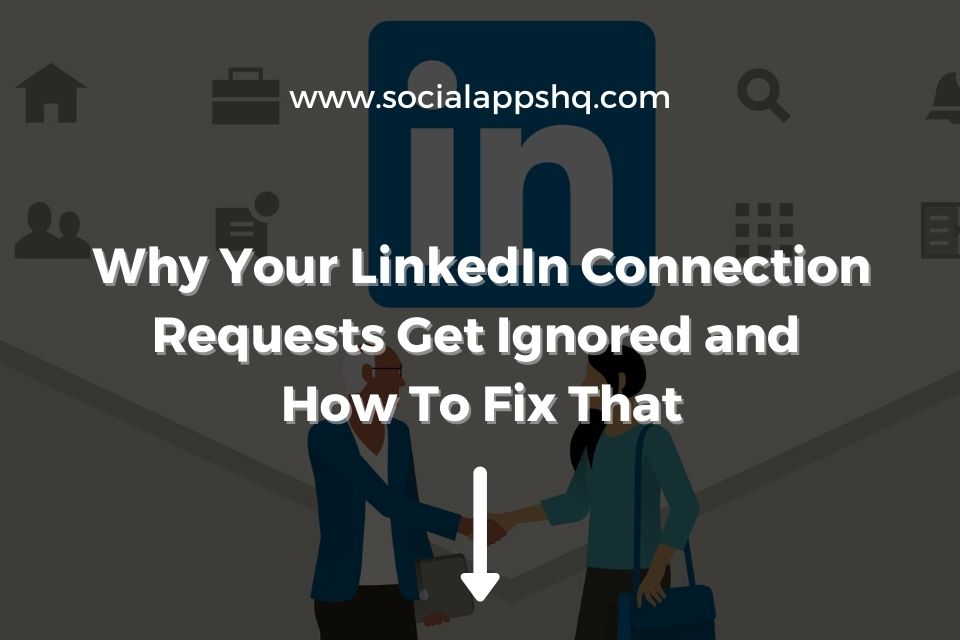Ah, LinkedIn! The platform that's like a digital Rolodex, helping professionals connect and network globally. One of its essential features is the connection request. But have you ever wondered, "Do these connection requests actually expire?" You're not alone! Connection requests are the lifeblood of LinkedIn networking, allowing individuals to establish relationships, share insights, and find opportunities. In this post, we will explore the ins and outs of
The Lifecycle of a LinkedIn Connection Request

The lifecycle of a LinkedIn connection request can be seen as a series of stages, each playing a crucial role in your networking journey. Let’s break it down:
- Sending the Request: When you find someone interesting or relevant, you can click on the "Connect" button and optionally add a personalized message. This gives context about why you wish to connect.
- Pending Status: Once sent, the request enters a "pending" status. During this time, the recipient will see the request in their notifications, and you won’t be able to send them another request until they respond.
- Acceptance: If the recipient accepts your request, congratulations! You are now connected. This opens up opportunities for message exchanges, sharing content, and potentially collaborating in the future.
- Declining: If the recipient declines your request, you'll receive no notification, but the request will automatically disappear from your pending requests. It’s best to respect their decision.
- Expiration: After a certain period of time, if the recipient doesn’t respond, the request will expire. Currently, LinkedIn doesn’t specify an exact timeframe, but it’s typically around 3 to 6 months.
Understanding this lifecycle can help you strategize your networking efforts. Remember, always personalize your connection requests to increase the chances of acceptance!
Understanding Expiration of Connection Requests

When it comes to LinkedIn, you might wonder how long you have to respond to those connection requests that pop up on your feed. It’s a bit of an interesting subject! Let’s break it down.
Firstly, it’s important to understand that LinkedIn connection requests do have an expiration date. When someone sends you a request, they are essentially asking to be part of your professional network, and that request is not open-ended. Here’s how it works:
- Time Limit: Connection requests sent on LinkedIn remain active for a period of 6 months.
- After Expiration: If you haven’t accepted or declined the request within this timeframe, it will automatically expire. This means you’ll no longer see that request in your notifications.
- Impact on Sender: If the request expires, the sender has to take the initiative again by sending a new request if they still want to connect with you.
Moreover, expired requests do not affect your profile or your connection count. It’s simply a way for LinkedIn to keep things tidy and current. You can also manage your incoming requests by reviewing them regularly. This helps you connect with new opportunities without letting requests linger indefinitely.
So, to sum it up: keep an eye on those connection invites, as they won’t last forever. If you’re considering a connection, try to make a decision before that six-month window closes!
How Long Do You Have to Accept Connection Requests?
When you receive a connection request on LinkedIn, you might find yourself wondering, “How long can I wait before I need to take action?” The answer is straightforward, but let’s delve into some details.
Once someone sends you a request, you essentially have six months to accept it. Sounds reasonable, right? Here’s how the timeline looks in a bit more detail:
| Action | Time Frame |
|---|---|
| Receive Connection Request | — |
| Time to Accept or Decline | 6 Months |
| Request Automatically Expires | After 6 Months |
What's interesting is how this time frame encourages efficiency in networking. If you're busy or unsure about the request, take your time, but remember the clock is ticking! In the world of LinkedIn, being prompt can help you seize opportunities before they slip away.
Also, if you happen to miss this window, don’t fret! The sender can always send you a new request. Just be sure to evaluate whether you want to connect and consider potential networking benefits before making your decision.
In short, you’ve got six months to decide what to do with any incoming requests. Make it work for you! Happy networking!
5. Implications of Ignoring Connection Requests
Ignoring connection requests on LinkedIn might seem harmless, but it can have several implications that you might not have considered. Let's break down why staying on top of these requests is essential.
- Missed Networking Opportunities: By ignoring requests, you might miss out on valuable connections that could lead to job opportunities, partnerships, or collaborations. Every connection could potentially open up new avenues for professional growth.
- Perception Issues: Not accepting connection requests might create a perception that you are unapproachable or uninterested in networking. This could affect how others view your professional brand.
- Unintentional Disconnection: If you consistently ignore requests from specific individuals or groups, they may decide to disconnect or remove you from their professional circles, impacting your network.
- Algorithm Impact: LinkedIn’s algorithm pays attention to user behaviors, including how quickly you respond to connection requests. Poor engagement could affect your visibility on the platform.
- Opportunities to Help Others: Accepting connection requests allows you to expand your ability to help others. You can share advice, referral opportunities, or introduce people within your network, ultimately contributing to a more supportive professional community.
In conclusion, while it may feel easier to ignore those notifications, taking the time to evaluate each request could benefit your career and expand your professional relationships significantly.
6. Best Practices for Managing Connections on LinkedIn
Managing your LinkedIn connections effectively can be a game changer in building a strong professional network. Here are some best practices you might want to implement:
- Regularly Review Connection Requests: Make it a habit to check your connection requests weekly. This way, you won’t miss out on potential valuable connections.
- Evaluate Each Request: Before accepting a request, look at their profile. Ask yourself: Do we have common interests? Can this person contribute positively to my network?
- Personalize Connections: Whenever you accept a request, consider sending a thank-you message or commenting on something relevant from their profile. This establishes a rapport right away.
- Be Selective: It may be tempting to accept every request, but being selective can help maintain the quality of your network. Focus on meaningful connections rather than quantity.
- Engage with Your Network: Don’t just add connections—engage with them! Share relevant articles, comment on their posts, and participate in discussions. This keeps your network active and beneficial for everyone involved.
By following these best practices, you'll not only enhance your LinkedIn experience but also foster a more vibrant, engaging professional network that will serve you well in your career journey.
Do LinkedIn Connection Requests Expire and How Long Do You Have to Accept Them
LinkedIn is a powerful platform for professional networking, allowing users to connect, collaborate, and grow their careers. One question that often arises among LinkedIn users is whether connection requests expire and, if so, how long you have to accept them before they vanish. Understanding this aspect of LinkedIn can help users navigate their networking efforts more effectively.
As of October 2023, the general consensus is that LinkedIn connection requests do indeed have an expiration date. Here are some essential details to consider:
- Connection Request Expiration: A connection request on LinkedIn will expire after 14 days if it is not accepted by the recipient.
- Notifications: LinkedIn typically does not remind users about pending connection requests, so it’s essential to be proactive in managing these requests.
- Re-sending Requests: If a connection request expires, users can re-send a new invitation to connect, provided the recipient hasn't blocked them.
Here is a quick overview of the connection request timeline:
| Action | Time Frame |
|---|---|
| Send Connection Request | Instant |
| Connection Request Expires | 14 Days |
| Re-sending Connection Request | After Expiration |
In conclusion, it is crucial to accept or manage LinkedIn connection requests within a 14-day window to avoid losing valuable networking opportunities. Stay active on the platform to maximize your professional connections.










